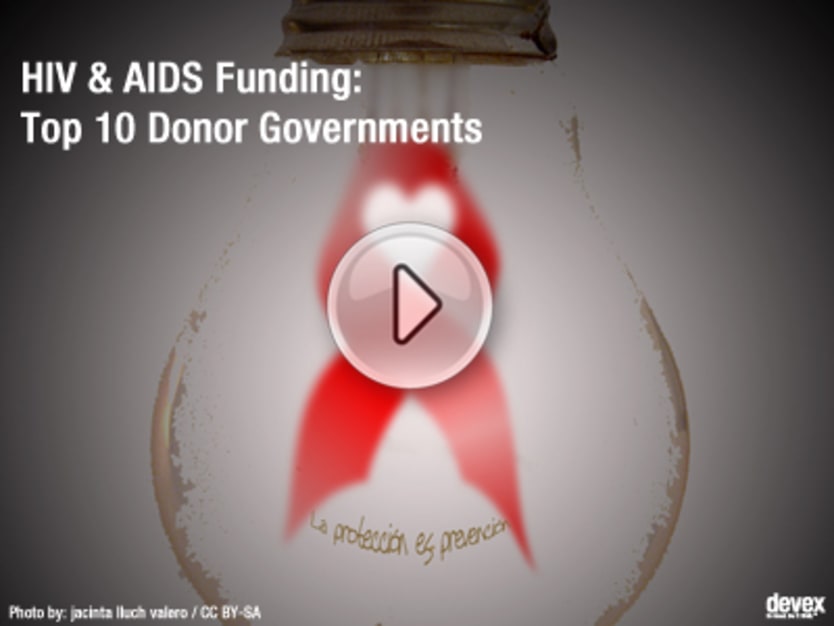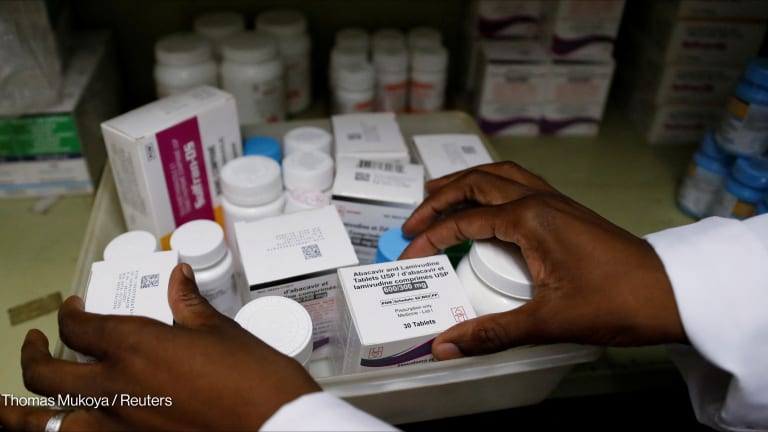
In November 2011, then-U.S. Secretary of State Hillary Clinton declared that an AIDS-free generation is now within reach — but only if donor governments maintain or increase funding to HIV and AIDS treatment, prevention, research and innovation efforts.
Nearly two years after, a joint report from UNAIDS and the Kaiser Family Foundation reveals donor contributions to HIV and AIDS have essentially remained flat since 2008. Funding from donor governments increased slightly from $7.6 billion in 2011 to $7.9 billion in 2012. The marginal growth in 2012 funding is largely due to donors increasing their contributions to the Global Fund to Fight AIDS, Tuberculosis and Malaria to meet their replenishment commitments.
The United States — whose contributions account for nearly two-thirds of total funding for HIV and AIDS in 2012 — accelerated disbursements to the Global Fund that year to meet its pledge to provide $4 billion by fiscal 2013. The donor country’s HIV and AIDS funding increased from $4.5 billion in 2011 to $5 billion in 2012. Similarly, Japan’s contributions surged 146 percent from $84.9 million in 2011 to $209.1 million in 2012 because it prepaid its 2013 pledges to the Global Fund.
In contrast, U.K. funding for HIV and AIDS dropped from $971.2 million to $801.1 million because it disbursed a large share of its 2012 Global Fund commitments in 2011. (Check out this slideshow to see which donor countries have contributed the most to HIV and AIDS funding in 2012.)
The report also notes that total HIV and AIDS commitments among major donor countries decreased in 2012 — governments pledged to provide $8.8 billion in funding to the sector in 2011 and $8.3 billion last year — which could portend the start of a downward trend in contributions. HIV and AIDS commitments increased exponentially between 2002 and 2008, plateauing thereafter.
But decreased funding could slow down the progress made toward reducing new incidences of HIV and increasing access to information systems, treatment and care. A UNAIDS report released a day ahead of the general debates at the U.N. General Assembly notes the global health community’s progress in meeting Millennium Development Goal 6. New HIV infections among children and adults have fallen 33 percent since 2001, while increased access to antiretroviral treatment has resulted in a 30 percent drop in AIDS-related deaths since 2005.
At the moment, growing domestic spending on HIV and AIDS is helping to bridge the funding gap for the sector. Total funding for HIV and AIDS in 2012 reached $18.9 billion, 53 percent of which came from domestic resources. Annual funding to meet MDG 6 is estimated to be between $22 billion and $24 billion.
The United Kingdom has pledged to provide 1 billion pounds ($1.6 billion) to the Global Fund for the 2014-2016 period. But funding is contingent on other donors committing enough resources to reach Global Fund’s $15 billion target for the period. The United States has requested $1.65 billion for the Global Fund in its fiscal 2014 budget, while Nordic countries — Sweden, Norway, Finland, Denmark and Iceland — have promised to contribute $750 million.
Read more:
Top 10 US and European philanthropic donors to global AIDS relief
Health funding in Africa: How close is the AU to meeting Abuja targets?
Join the Devex community and gain access to more in-depth analysis, breaking news and business advice — and a host of other services — on international development, humanitarian aid and global health.








